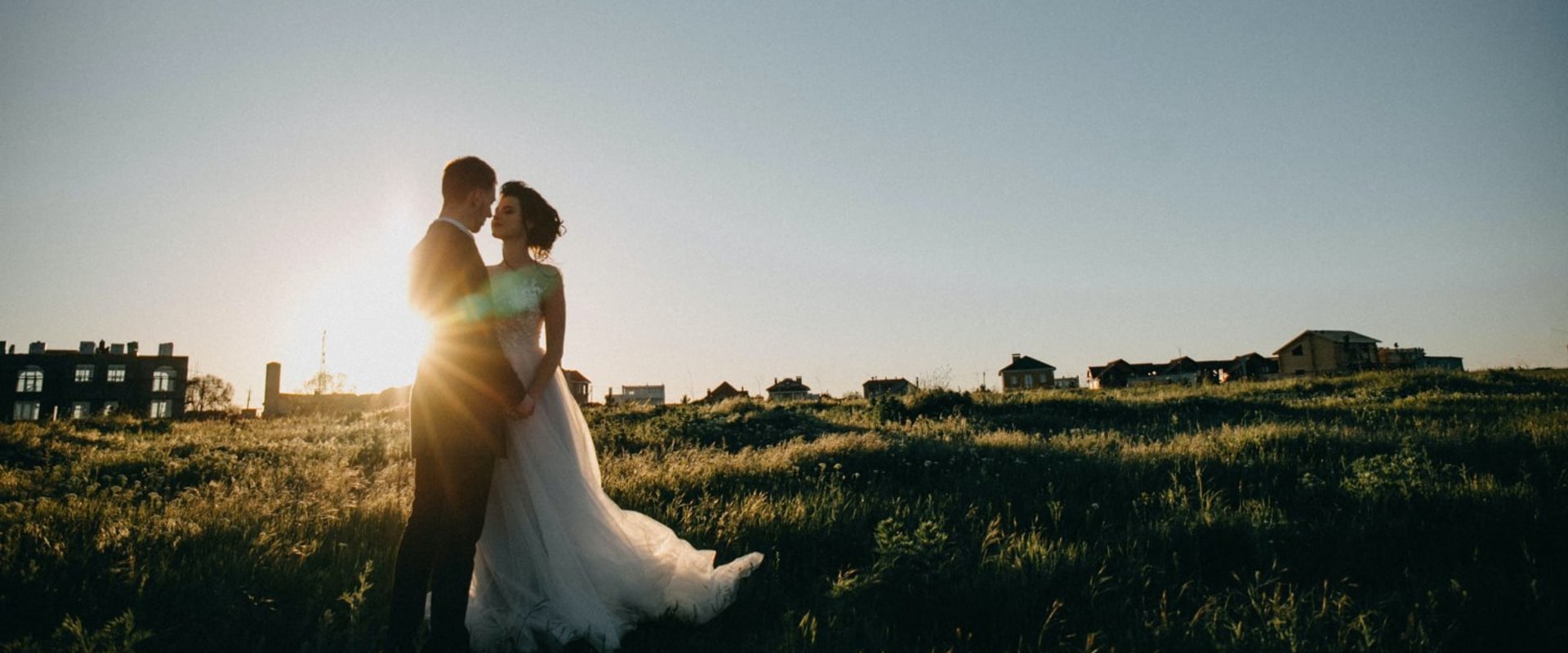Wedding photography is a special art form, requiring the photographer to capture the meaningful moments and emotions of the big day. For many couples, the memories of their wedding day will be held in the photographs taken on that day. With so much riding on the photos, it is essential that any wedding photographer is well prepared for the task. Here are some tips to help you make sure your wedding photography is as successful and beautiful as possible. When it comes to wedding photography, the most important thing is to be prepared.
Make sure you have all the necessary equipment and that you know how to use it. Research different wedding venues and determine what kind of lighting you'll need. Additionally, talk to the couple and find out what kind of photos they want. Do they want classic posed shots or more candid photos? Knowing what they're looking for will help you plan and prepare accordingly. When shooting a wedding, it's important to be creative.
Capture moments like the bride and groom getting ready or family members sharing a tender moment. Look for unique angles and incorporate interesting elements into your shots. Don't forget to take photos of guests enjoying themselves, as those can be some of the most memorable shots. In addition to being creative, make sure you're also mindful of your settings. Take the time to adjust your ISO, shutter speed, and aperture for each shot.
Use a variety of lenses to capture different perspectives and details. Additionally, take test shots to make sure everything looks as it should before taking the main photo. Lastly, don't forget about the post-processing phase. Take the time to edit each photo so that it looks its best. Adjust the colors, contrast, and sharpness as needed.
You can also add special effects or use software to remove unwanted objects from the background.
Equipment and Prep Work
When it comes to wedding photography, having the right equipment and knowing how to use it is essential. You'll need to make sure you have all the necessary gear, such as lenses, filters, flashes, and tripods, and that you understand how to use them. It's also important to do some research on different wedding venues and determine what kind of lighting each one has so that you can adjust your equipment accordingly. You should also have a clear plan in place before the big day. Consider taking test shots at the venue beforehand to get an idea of how the light will affect your photos.This will help you make sure that the images you take on the wedding day turn out as great as possible.
Get Creative with Your Shots
When it comes to wedding photography, getting creative with your shots is key. You may also want to consider incorporating props, like a bouquet or a special accessory that the bride is wearing. In addition, take the time to explore the venue and find interesting backdrops to use in your photos. By taking the time to get creative, you can make sure that your wedding photos are unique and stand out from the rest. Be sure to take advantage of natural lighting and use different camera settings to create a variety of looks for your images.It's also important to pay attention to composition and focus on capturing the emotion and energy of the day.
Post-Processing
Post-processing is an important part of any wedding photography. It’s where you take each photo and make adjustments to ensure that it looks its best. Adjusting colors, contrast, and sharpness will help you bring out the best in each photo. When post-processing, take the time to make sure that each photo looks its best. This means adjusting the colors, contrast, and sharpness as needed.You can also add special effects or filters to create unique photos. Be sure to take your time and not rush the post-processing phase. If you’re new to post-processing, there are plenty of tutorials online that can help you get started. You can also hire a professional photographer or editor to help you with post-processing if you’re feeling overwhelmed.
Adjust Settings
When it comes to wedding photography, there are some key settings you should always adjust for each shot. ISO, shutter speed, and aperture are all essential elements of a successful photograph.To get the most out of your photos, take the time to adjust these settings for each shot. Additionally, don’t be afraid to switch up your lenses. Different lenses will capture different perspectives and details, so try experimenting with different ones throughout the day.
ISO
ISO is the measure of a camera's sensitivity to light. The higher the ISO, the more sensitive the camera will be to light.When shooting in low light situations, such as indoors or during sunset, you may need to increase your ISO. This will help you capture more light in your photos. However, increasing your ISO will also increase the amount of digital noise in your photos. You’ll want to find a balance between having enough light and avoiding too much noise.
Shutter Speed
Shutter speed is the amount of time that your camera’s shutter is open when taking a photo.The faster the shutter speed, the less light that will enter the camera and the less motion blur you’ll get in your photos. For wedding photography, you’ll usually want a fast shutter speed in order to capture sharp images of people in motion without any blur. However, if you want to experiment with motion blur, such as with a bride and groom walking down the aisle, you can slow down your shutter speed.
Aperture
Aperture is the size of the opening in a camera lens when a photo is taken. A larger aperture allows more light to enter the camera and will result in a brighter photo.It will also result in a shallower depth of field which will make your subject stand out against a blurred background. Conversely, a smaller aperture will let in less light and result in a deeper depth of field which will keep more of your image in focus.
Lenses
When it comes to wedding photography, it’s important to have a variety of lenses on hand. Different lenses can capture different perspectives and details that can help tell the story of your wedding day. For example, a wide-angle lens can be used to capture large group shots while a telephoto lens can be used to capture intimate moments from a distance.Experimenting with different lenses can help you create unique and interesting photos. With careful preparation and creativity, you can take stunning wedding photos that will last a lifetime! Utilize these tips to ensure that your wedding photography captures all the special moments from the big day. Equip yourself with the right gear and settings, get creative with your shots, and don't forget to post-process your images for a polished look. By following these steps, you'll be able to create beautiful memories of your special day for years to come.




